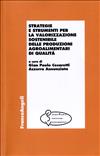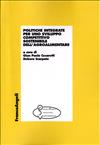Information, labelling and consumers’ behaviour: an analysis on consumers use of food labels Consumer demand for higher quality foods has been increasing, especially in high income countries, based on consumers’ increased knowledge about links between diet and health; awareness of quality characteristics and access to information about new production and processing technologies. Labelling may be considered a very
important tool to pass information about product attributes on to consumers. Labelling is aimed at providing a sort of identity card of the product, so as to make information immediately accessible to consumers making a purchasing decision. As a public intervention tool, labelling performs a number of functions; the most important of them is a direct support to consumers in their purchasing decisions.
When performing this function labelling changes the information environment related to the quality attributes. More specifically, labelling makes it possible to turn experience and credence attributes into search attributes. In the case of experience attributes, imposing the inclusion of specific information in the label will enable consumers to judge the product quality even before buying it, in the case of credence
attributes, consumers supported by labelling will be able to recognise specific characteristics of the product they wouldn’t otherwise identify even after consumption. Labelling may improve the perception of search attributes, increasing the amount and nature of the information available on the market. According to this, the paper analysed the role played by food product labelling as a tool to provide consumers with a direct support when making purchase decisions; it is focused on consumers’ awareness and use of specific food label elements. Some empirical evidences are illustrated as to the level of consumer’s knowledge, interpretation and use of the information included in the label. Specifically the aim of the
survey was: identifying how often consumers read the labels; assessing the degree of consumers’ familiarity with the different data included in the label; identifying the importance attached to the various details included in the label; identifying which information included in the label mostly affect consumers’ purchasing decisions; checking the existence of different clusters and developing a description of them. To collect data a questionnaire was developed and administered to a representative sample of 400 consumers living in Campania. The analysis of the data was carried out in two stages. In the first stage a uni-variate and bi-variate analysis was made, aimed at providing a description of the sample interviewed. In the second stage two multi-variate analysis techniques were applied to probe into the relationship amongst the different variables: factorial analysis and cluster analysis. This research provides for in-depth discussion on consumers’ awareness, knowledge and use of food labels, as well as their capacity to understand label information appropriately and make food choices that meet their needs. The results suggest that many consumers are confused about how to use the information from some label elements and that they have varied levels of capacity to use them appropriately and successfully. The findings suggest that if consumers are to use information on more label elements (or label information more often), then they need to be enabled to do so, possible ways by which this could occur include via information, education and practice.




